A Neurocomputational Model of the N400 and the P600 in Language Processing
- PMID: 28000963
- PMCID: PMC5484319
- DOI: 10.1111/cogs.12461
A Neurocomputational Model of the N400 and the P600 in Language Processing
Abstract
Ten years ago, researchers using event-related brain potentials (ERPs) to study language comprehension were puzzled by what looked like a Semantic Illusion: Semantically anomalous, but structurally well-formed sentences did not affect the N400 component-traditionally taken to reflect semantic integration-but instead produced a P600 effect, which is generally linked to syntactic processing. This finding led to a considerable amount of debate, and a number of complex processing models have been proposed as an explanation. What these models have in common is that they postulate two or more separate processing streams, in order to reconcile the Semantic Illusion and other semantically induced P600 effects with the traditional interpretations of the N400 and the P600. Recently, however, these multi-stream models have been called into question, and a simpler single-stream model has been proposed. According to this alternative model, the N400 component reflects the retrieval of word meaning from semantic memory, and the P600 component indexes the integration of this meaning into the unfolding utterance interpretation. In the present paper, we provide support for this "Retrieval-Integration (RI)" account by instantiating it as a neurocomputational model. This neurocomputational model is the first to successfully simulate the N400 and P600 amplitude in language comprehension, and simulations with this model provide a proof of concept of the single-stream RI account of semantically induced patterns of N400 and P600 modulations.
Keywords: Computational modeling; Event-related potentials; Language comprehension; N400; Neural networks; P600; Retrieval-Integration account.
Copyright © 2016 The Authors. Cognitive Science is published by Wiley Periodicals, Inc. on behalf of the Cognitive Science Society.
Figures

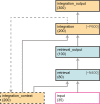
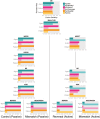
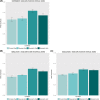
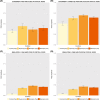
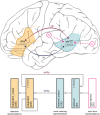
References
-
- Amunts, K. , & Zilles, K. (2012). Architecture and organizational principles of Broca's region. Trends in Cognitive Sciences, 16(8), 418–426. - PubMed
-
- Badre, D. , & Wagner, A. D. (2007). Left ventrolateral prefrontal cortex and the cognitive control of memory. Neuropsychologia, 45(13), 2883–2901. - PubMed
-
- Baggio, G. , & Hagoort, P. (2011). The balance between memory and unification in semantics: A dynamic account of the N400. Language and Cognitive Processes, 26, 1338–1367.
-
- Bentin, S. , McCarthy, G. , & Wood, C. C. (1985). Event‐related potentials, lexical decision and semantic priming. Electroencephalography and Clinical Neurophysiology, 60(4), 343–355. - PubMed
MeSH terms
LinkOut - more resources
Full Text Sources
Other Literature Sources

